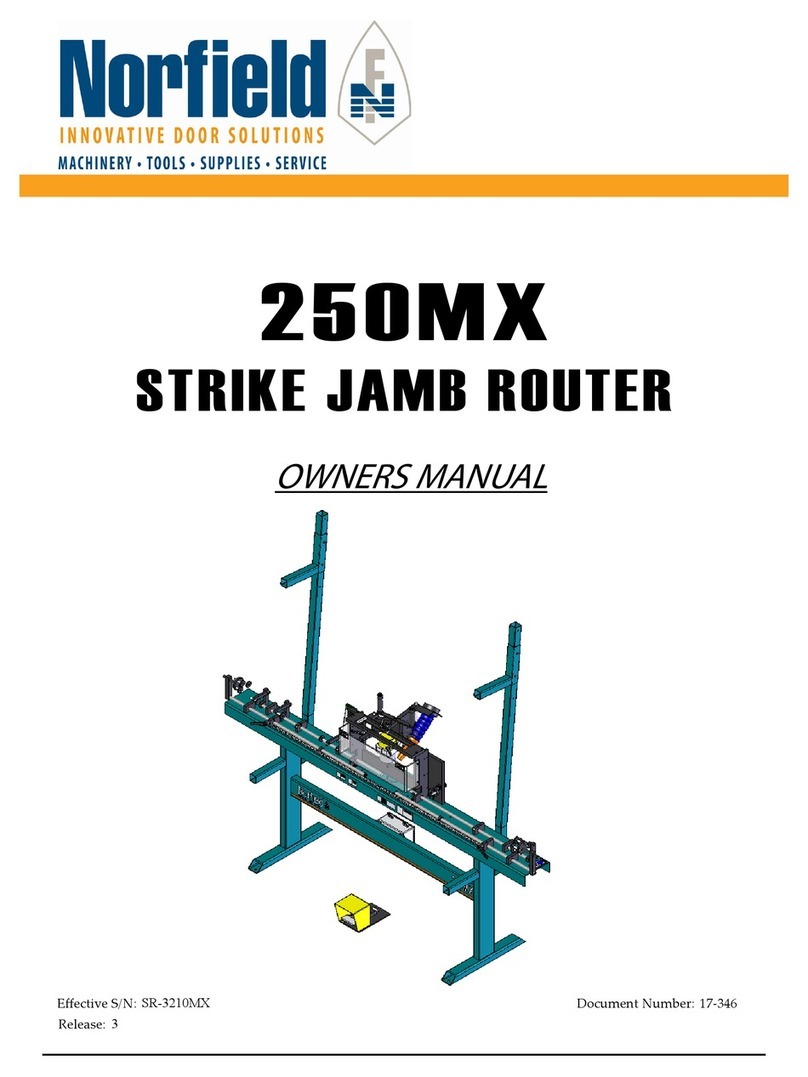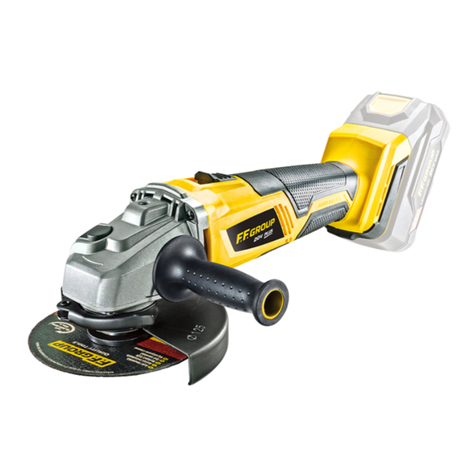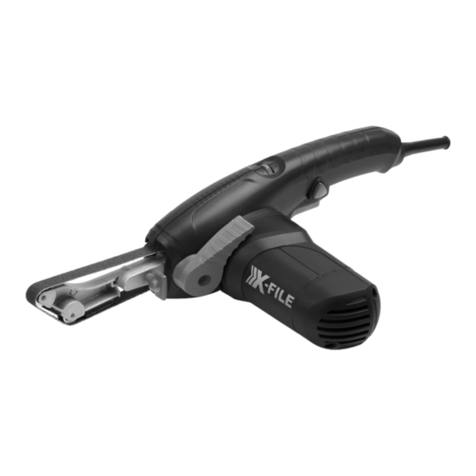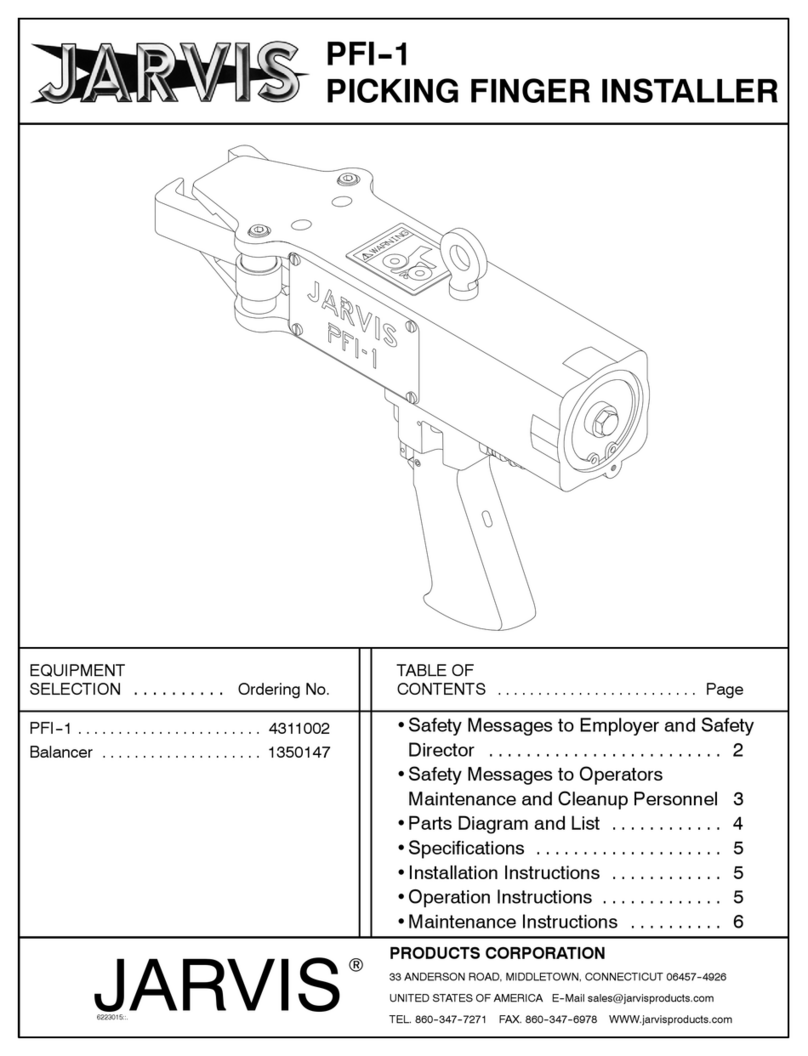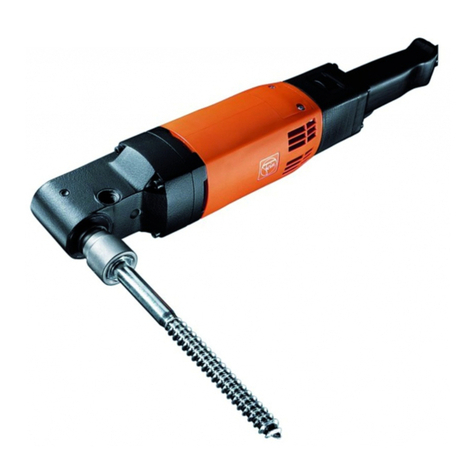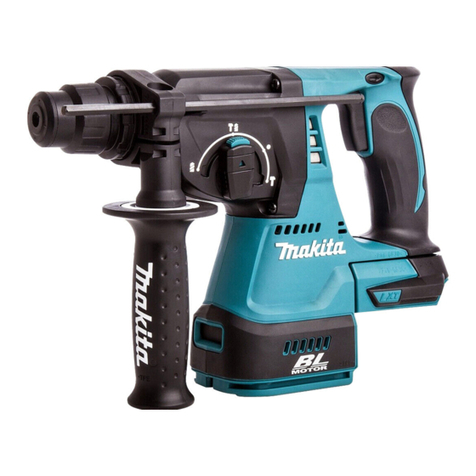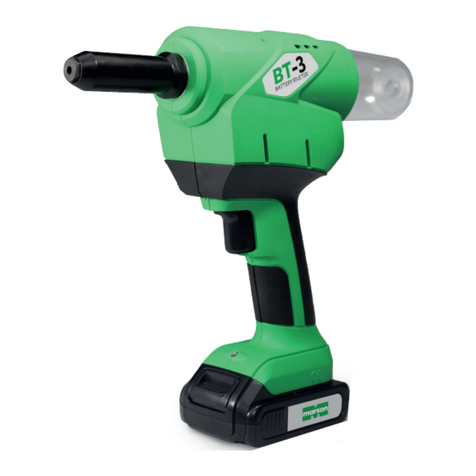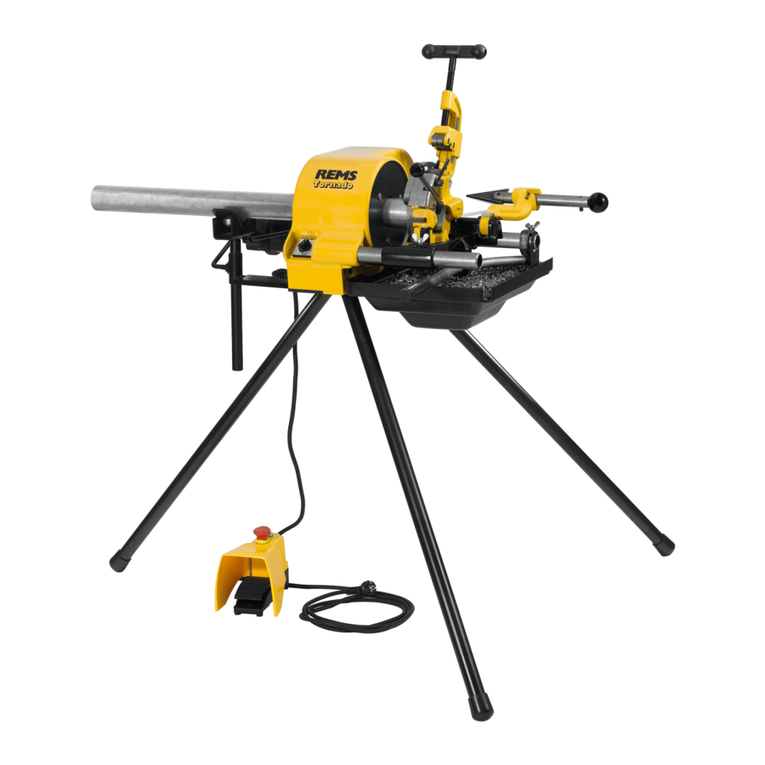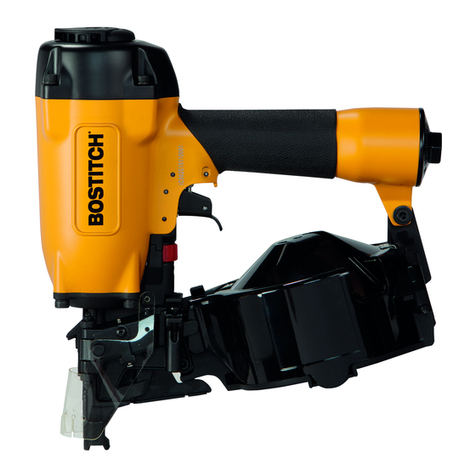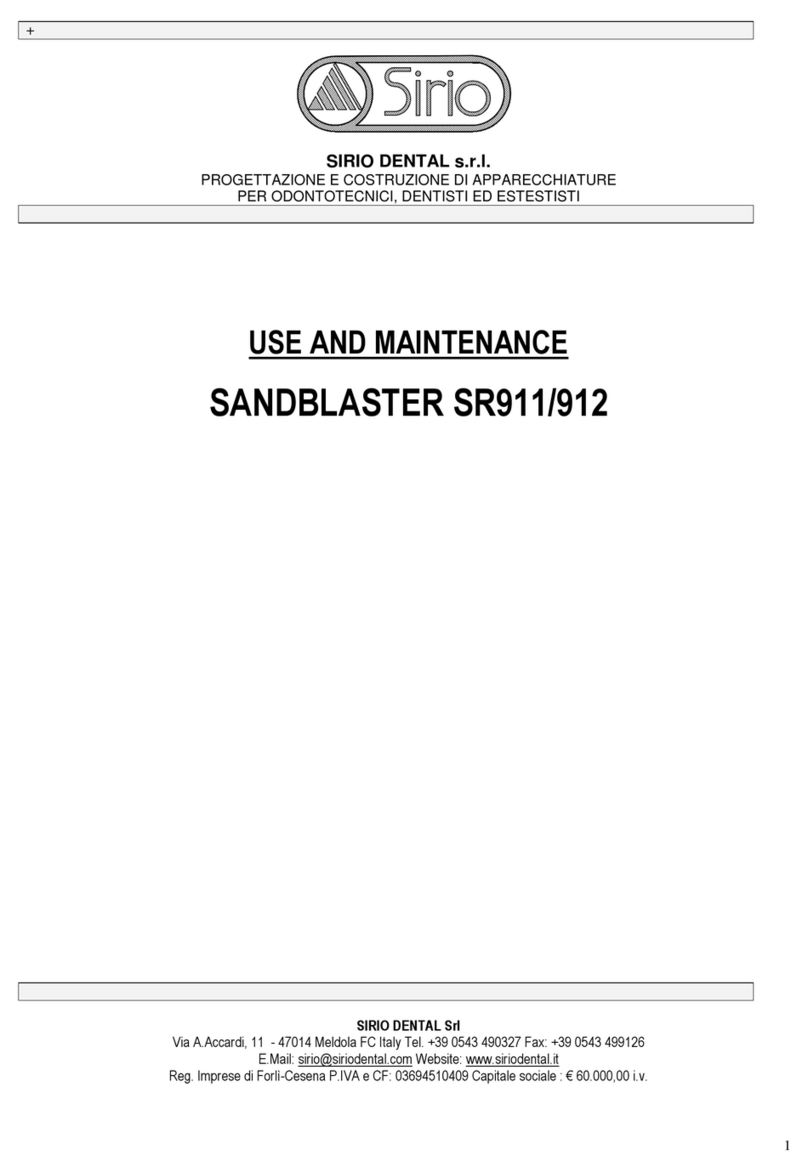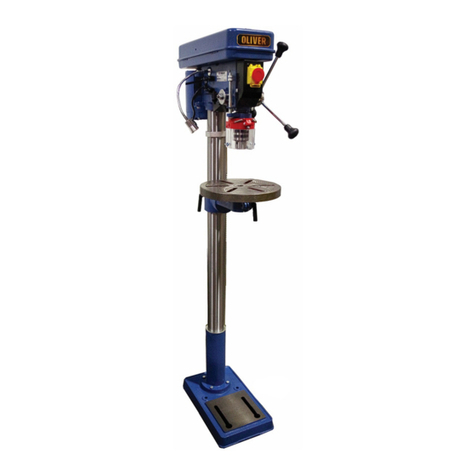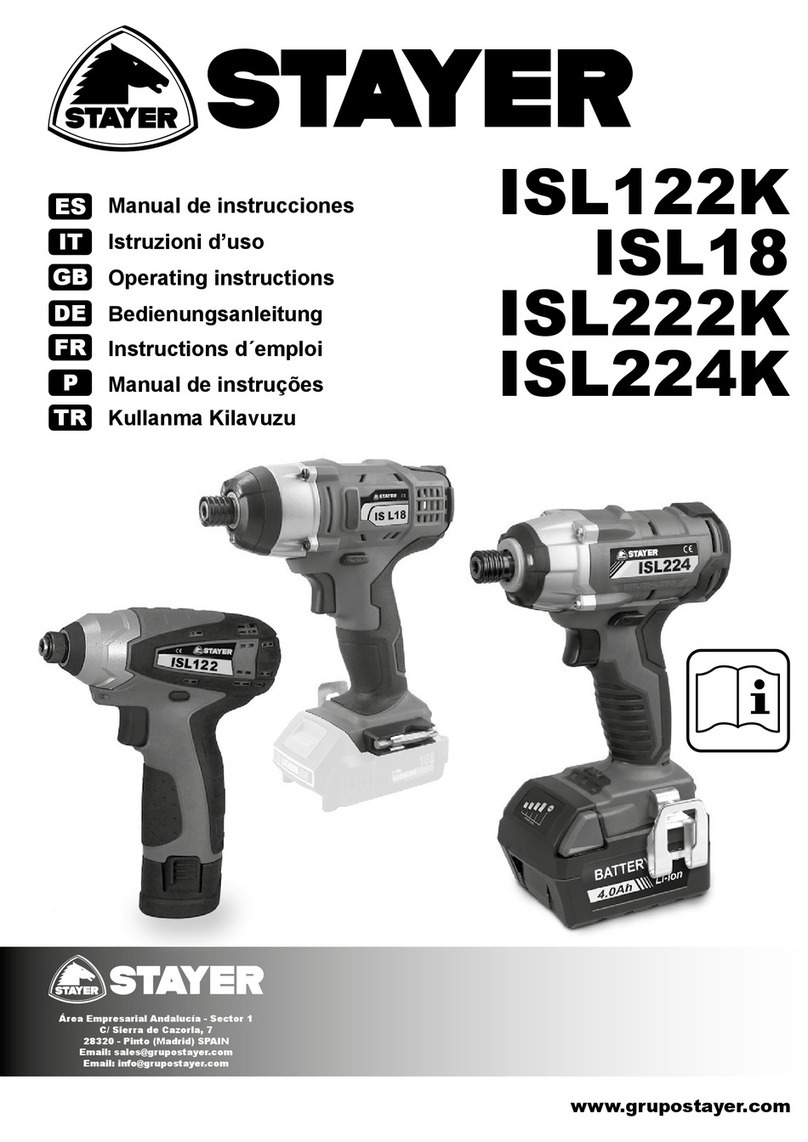Norfield magnum User manual

OPERATOR’S
MANUAL
Release: 1
SIGNATURE SERIES
MAGNUM
Eective S/N:DJ-2832-95
Document Number: 17-350

2
First Release: September, 2008

3
Noreld Industries
P.O. Box 459
Chico, Ca. 95927
Technical Support: (530) 891-4214 - Parts: (800) 824-6242
Serial No: _____________________
Date Sold: _____________________
Noreld Industries
is the name that represents Quality, Reliability, Support, Innovation
and True Customer Service. We have been dedicated to providing quality products and
excellent customer service for more than 40 years.
Noreld Industries
has earned a repu-
tation in the pre hanging industry for seing standards for reliable machinery, full techni-
cal support, machine parts, full line industrial woodworking tools and supplies and a team
of customer care representatives to support you! Our factory-trained technical personnel
are ready to assist you on the telephone or in your shop.

4
TABLE OF CONTENTS
Safety
Lockout Procedures
Specications
Location of Major Components
Section 1 - Installation & Setup
Section 2 - Operation
Section 3 - Seings & Adjustments
Section 4 - Special Adjustments
Section 5 - Maintenance
Section 6 - Troubleshooting
Warranty & Parts Replacement Policy
Contact Information
5
8
10
12
14
18
23
35
52
55
66
67

5
SAFETY
Safety considerations are an important element
of machine installation and operation. Actively
maintaining a safety mindset about yourself and
others while working around or on the
equipment is of primary importance. Operators and
maintenance personnel should refer to the safety informa-
tion on the following pages to familiarize themselves with
warning labels and practices providing for safe operation
and servicing of this machine.
Warning indicates a potentially hazardous situation which, if
not avoided, COULD result in death or serious injury.
Caution indicates a potentially hazardous situation which, if
not avoided MAY result in minor or moderate injury. It may
also be used to alert against unsafe practices.
Caution, without the safety alert symbol, indicates a poten-
tially hazardous situation which, if not avoided M AY result in
property damage but not personal injury.
Notice indicates important information that if not followed
may CAUSE damage to the equipment.
Mandatory Action conveys an action step that should be
taken to avoid the hazard.
Danger indicates an imminently hazardous situation, which if
not avoided WILL result in death or serious injury.
SAFETY

6
SAFETY
Do not operate this machine unless all guards are in place and working cor-
rectly. If any guards or hazard labels are missing or damaged call Noreld’s
Service Department immediately and request a replacement at (800) 824-6242.
Read and understand the operator’s manual before using this machine. Fail-
ure to follow proper operating instructions could result in death or serious
injury.
This machine, when in operation, produces wood chips and dust. The op-
erator and all persons in the work area MUST wear approved eye protection
with permanently aached, rigid plastic side shields. These safety glasses
must conform to ANSI Z87.1 standards and will have “Z87” printed on the
lens.
This machine, when in operation, produces a noise level greater than 85dB.
The operator and all persons in the work area MUST wear approved hearing
protection. OSHA has determined that a noise level in excess of 85dB aver-
age in 8 hours can cause permanent hearing damage. We recommend that
hearing protection be worn even if the decibel level is below 85dB.
Certain types of wood dust can cause allergic reactions. Sawdust has been
determined to be a Group A carcinogen by the International Agency for Re-
search on Cancer (IARC). A dust collection system or an approved personal
dusk mask MUST be used when operating this equipment.
This machine has moving parts that loose clothing and long hair can become
entangled in. Take care not to become caught between the work material
and the feed mechanisms or any other moving components.
Before beginning any service repairs, general maintenance, or adjustments
you MUST follow proper Lockout Tag-Out procedures. OSHA regulation
1910.147 establishes a minimal lockout tag-out procedure to assist employers
in the development of their own procedures.
Only trained personnel that have read and understand the operator’s manu-
al and all the safety precautions may operate this machine.

7
SAFETY
Inspect the machine at the beginning and end of each shift for damaged or
cracked components such as, but not limited to, saw blades, router bits, drill
bits, and boring bits.
Never leave this machine unaended while it is in operation. Make sure that
all electrical and air is in the o position when the machine is not in use or is
unaended and that any cuing blades have come to a complete stop.
Do not aempt to clean material from this machine until all the cuing blades
have come to a complete stop. Even when the machine has been turned to
the “o” position it may take up to several minutes for the blades to coast-
down to a complete stop.
Woodworking machinery is inherently dangerous, common sense and good
safety practices are your best defense against injury.
If you have any questions regarding the correct operation of the machine and
safety procedures in this manual call the Noreld Industries Service Depart-
ment at (800)-824-6242

8
LOCKOUT PROCEDURES
All employees will comply with these procedures. All equipment and/or circuits will be
locked out to protect against accidental or inadvertent operation when such operation of
the equipment and/or circuits could cause injury to personnel. Do not aempt to operate
any switch, valve, or other energy isolating device bearing a lock.
Lockout Responsibility
The primary responsibility for the proper lockout of equipment and /or circuits on a
maintenance or repair project belongs to the project Supervisor and/or Foreman. How-
ever, this does not alleviate any sub-contracted maintenance or repair personnel from
insuring that proper lockout/tagout procedures are followed at all times. The Supervi-
sor and/or Foreman will insure that each employee is properly instructed in the safety
signicance of lockout procedures.
Preparation for Lock-Out of Circuits and Equipment
In the following steps, when more than one individual is involved with the project and
required to lock out the equipment and/or circuits, each employee will place their own
personal lock on the energy isolating devices. A lock for each individual involved is the
preferred method for locking out energy sources. If this not feasible, the designated in-
dividual to the work crew (e.g. the project Supervisor or Foreman) with complete knowl-
edge of who is on the crew may be designated by the work crew as the individual re-
sponsible for carrying out all steps of the lockout procedure. That individual will inform
the work crew when it is safe to work on the equipment and/or circuits. Additionally,
the designated individual will not remove a crew lock until it has been veried that ALL
individuals are clear.
1. Notify all aected employees and customers that a lockout is required and the reason
for it.
2. If the equipment is in operation, after obtaining approval, shut it down by the normal
stopping procedures.
The following is an example of the minimum requirements for a lockout/tagout
procedure. Noreld strongly recommends that your company establish its own wrien
procedure. OSHA Regulation 1910.147 establishes a minimal lockout/tagout procedure
to assist employers in the development of their own Lockout Procedures
LOCKOUT PROCEDURES

9
LOCKOUT PROCEDURES
3. Operate the switch, valve or other energy isolating devices so that all energy sources
(electrical, mechanical, pneumatic, hydraulic, etc.) are disconnected or isolated from
the equipment and/or circuits. Stored energy, such as that in capacitors, springs,
elevated machine members, rotating ywheels, hydraulic systems, and air/gas,
steam or water pressure, etc., must also be dissipated or restrained by methods such
as grounding, repositioning, blocking, bleeding down, etc.
4. All aected employees are then required to lockout the energy devices with their
individual lock.
5. After insuring that no personnel are exposed and as a check on having disconnected
the energy sources, operate the push buon or other normal operation controls to
make certain the equipment will not operate. In the event that electrical circuits have
been locked out, insure that the circuits are de-energized by applying an appropriate
voltage tester that itself has been tested on live circuits. Be sure to return all operating
controls to the neutral position.
The equipment and/or circuits are now locked out.
Restoring Equipment and/or Circuits to Service
1. When the job is complete and the equipment or circuits are ready for testing or nor-
mal service, check the equipment and/or circuits to insure that no one is exposed.
2. When the equipment and/or circuits are clear, remove all locks. The energy isolating
devices may be operated to restore energy to the equipment and or circuits.

10
SPECIFICATIONS
Electrical Supply Requirements
AC Line Voltage Phase Her Amperage Comment
208/230 3 60 40 With Vacuum
208/230 3 60 30 Without Vacuum
230/115 160 30 --------
Air Requirements
PSI SCFM Minimum Supply Pipe I.D.
90 2.2
8.5 w/ optional air screwdriver
1/2” I.D. minimum air line when less than 20 feet
from compressor OR 3/4” I.D. minimum when
more than 20 feet from compressor.
Application Motor Part Number HP Volts Amps
Lock Drill Noreld 6801-021 2 208/230 5.9/5.9
Latch Drill Noreld 6802-032 1208/230 3.1/2.8
Sander Baldor 15-176 1208/230 3.1/2.8
Cuerhead Baldor 15-178 5208/230 12.9/11.7
Elevator Dayton 15-154 1/3 208/230 1.7/1.7
3 Phase Motor Specications
Application Motor Part Number HP Volts Amps
Powerfeed Dayton 15-360 1/15 DC Volts .75
Bu Router Motor Dewalt 15-174 1-1/2 115 11
Faceplate Router Dewalt 15-174 1-1/2 115 11
Single Phase Motor Specications
Machine Cycle Rate 30 Doors/Hour
Shipping Weight Approx. 2600 Lbs
Minimum Floor
Space Requirement
Width - 7’-5”
Length - 26’-4”
Height - 8’-9”
SPECIFICATIONS

11
SPECIFICATIONS
Door Width 1’-0” - 4’-0”
Door Height Up to 9’-0”
Door Thickness 1-3/8” - 2-1/4”
Jamb Width 2-1/2” to 10-1/2”
Jamb Length Up to 9’-0”
Jamb Thickness 1/2” - 1-5/8”
Stop Thickness 1/2” Maximum
Bu Spacing Variable: 6-1/2” Minimum from top of Door
Bu Radius 1/4” & 5/8”
Bu Size Standard - 3-1/2”, 4”, 4-1/2” & 5”
Optional - 3”
Lock Backsets 2-3/8” to 5”
Machine Capabilities

12
SANDER
BUTT ROUTER
1'-0" DOOR SUPPORTS
HARDWARE TRAY
(6807-113)
(6805-127)
INDEX BAR & DOOR
MAIN BAR
DOOR ROLLERS
(6805-115)
ASSEMBLY
ASSEMBLY TRAM RAIL
UNDERCUT REFERENCE
DOOR CLAMPS
INFEED BED
FACEPLATE ROUTER
ASSEMBLY
LOCK DRILL
LATCH DRILL
POWERFEED
ASSEMBLY
OPERATOR CONTROL PANEL
FOOT PEDALS
DOOR CLAMP/DRILL CYCLE
GENERAL ASSEMBLY (FRONT)
AND JAMB STOPS
CUTTERHEAD
JAMB CLAMP &
REFERENCE ASSEMBLY
LOCATION OF MAJOR COMPONENTS

13
LOCATION OF MAJOR COMPONENTS
VACUUM HOSE
FILTER-REGULATOR-LUBRICATOR
TRAM RAIL
T-TRACK ASSEMBLY
MAIN ELECTRICAL PANEL
UNDERCUT REFERENCE ASSEMBLY
BELT GUARD
AXILIARY ELECTRICAL PANEL
(6807-028)
ASSEMBLY
WIDTH INDEX MOTOR
(13-668)
LOCK DRILL
LIFTING BRACKET
FACEPLATE ROUTER
ASSEMBLY
GENERAL ASSEMBLY (REAR)

14
INSTALLATION & SETUP
The following information should be read completely before any aempt is made to uncrate, install or
operate the machine. Before operating the machine, the following 5 items need to be accomplished:
1. Uncrate the machine and inspect for shipping damages or shortages.
2. Position the machine in its permanent location.
3. Provide the proper electrical supply and make connections.
4. Provide the proper air supply and make connections.
5. Provide material for set-up and adjustment of the machine.
SECTION 1: INSTALLATION & SETUP
1-1 UNCRATING AND POSITIONING THE MACHINE:
The shipping crate for the Magnum is made up of a rigid wood base to which the machine is secured. A
protective plastic cover and wood framework surround the machine. Also, a box containing small com-
ponents and spare parts is usually enclosed in the crate. Before uncrating and positioning the machine,
study the installation drawing on the next page. Make sure that adequate clearance for material handling
and machine access are provided.
To uncrate the machine, the following procedure is recommended:
1. Remove the wood framework and plastic covering.
2. With the machine still on the base, move it close as possible to its permanent location. Rollers
can be placed under the crate base that it can be moved into position easily.
3. Remove the bolts securing the machine to the base and lift the machine into position.
1-2 SHIPPING DAMAGE AND SHORTAGES:
After the machine has been uncrated, inspect the entire machine and all other contents in the crate for
shipping damage. In the event there was damage in transit, notify the freight carrier and Noreld imme-
diately. While any shortages or freight damages are the responsibility of the carrier, Noreld desires to be
notied as soon as possible so that the replacement of lost or damaged parts can be expedited.
1-3 MOVING AND POSITIONING THE MACHINE:
After the machine has been uncrated and inspected for shortages or damage, it can be moved to its per-
manent position.
NOTE: MOVE THE MACHINE USING A CHAIN THROUGH THE LIFTING BRACKET ON THE TOP
OF THE FRAME OR BY SLIDING IT ON THE FLOOR.
Position the machine allowing adequate clearance behind the machine for electrical and air connections.
Also, allow ample space in front and to the sides for material handling (FIG 1-1).

15
INSTALLATION & SETUP
FIGURE 1-2
45"
12-1/2"
19'-0"
ALLOW 3' TO 4' CLEARANCE BETWEEN
BACK OF MACHINE AND WALL
Position the machine with the dimensions in Fig 1-1 in mind. If the machine is going to be positioned
near a wall, it is recommended that 3’ to 4’ clearance be provided for access to the electrical enclosures
and components on the rear of the machine.
Material ow in and out of the machine also needs to be considered. On the infeed end of the machine
a minimum of 8’ clearance is recommended for loading doors. On the outfeed end, at least 4’ is recom-
mended for material removal.
If a portable dust collector is being used, placement of the machine should allow adequate space for the
unit.
FIGURE 1-1 (TOP VIEW)
MATERIAL FLOW
ELECTRICAL
CONNECTION
AIR
CONNECTION
VACUUM
CONNECTION
LIFTING BRACKET

16
1-5 ELECTRICAL CONNECTIONS:
INSTALLATION & SETUP
NOTE: All electrical connections should be made by a qualied electrician.
Before making any electrical connections, insure that the voltage listed on the electrical box and circuit
breakers matches that of your facility (i.e. 230V - 3 Phase -40 Amp).
Refer to Figure 1-3 for the standard electrical connections. Noreld recommends that you have a main
disconnect switch for the input source near the machine. This switch is usually wall mounted near the
machine in a position convenient to the operator (or maintenance person) for safety reasons.
After power has been connected, check the rotation of the Lock Drill Motor. Correct rotation has the mo-
tor turning COUNTER-CLOCKWISE when viewed from the front of the machine. If the rotation is not
correct, have the electrician reverse the two outside leads on the three phase input.
THREE PHASE CONNECTION - CON-
NECT HIGHEST VOLTAGE LEG TO
CENTER LUG
MAIN ELECTRICAL
PANEL
FIGURE 1-3
1-4 AIR SUPPLY AND CONNECTIONS:
The Magnum requires 2.2 CFM of clean, dry air @ 90 PSI (8.5 CFM if air screwdriver and pre-drill is used)
for proper operation. The air supply is connected to the machine at the lter-regulator-lubricator (FRL)
unit located on the outfeed end of the main frame (FIG 1-2). The supply line should be 1/2” minimum if
the length of the run is 75’ or less. For runs between 100’ and 300’, a 3/4” supply line is recommended.
For convenience, a quick disconnect at the connection point and an air shut-o valve near the machine is
GROUND
NEUTRAL
SINGLE PHASE INPUT
THREE PHASE INPUT

17
INSTALLATION & SETUP
1-6 VACUUM REQUIREMENT:
A dust collection system must be used with this machine. If the machine is connected to an existing in-
plant dust collection system, the system must be capable of moving at least 1900 CFM (Cubic Feet per
Minute) at the connection point. Vacuum connection is made at the 4” Vacuum Connection duct which is
located on the back of the machine on the lower frame support (see Figure 1-2).
If the Noreld Vacuum unit was purchased with this machine, a cord end is provided on the backside of
the machine (230V Phase 3 @ 10A) for automatic starting.
Allow adequate space for access to the dust bags and controls of the vacuum system. The vacuum unit
may be placed behind or at either end of the Magnum depending on the layout of your shop.
It is important to have as few bends as possible in the 4” vacuum hose (connecting the vacuum unit to the
machine) as this may aect the eciency of the vacuum.

18
SECTION 2: OPERATION
OPERATION
2-1 PREFACE:
The following is a brief description of the operation procedures of the Magnum. It is recommended that
before processing a door, the operator should make sure that the machine is properly adjusted for door
width, undercut, hinge size and location, lock height, backset, size of lock and latch bores and size of the
faceplate rout. Proper procedures for making these adjustments are outlined in Section 4.
Refer to gure 2.1 below for adjustment locations.
SANDER
BUTT ROUTER
1'-0" DOOR SUPPORTS
HARDWARE TRAY
(6807-113)
(6805-127)
INDEX BAR & DOOR
MAIN BAR
DOOR ROLLERS
(6805-115)
ASSEMBLY
ASSEMBLY TRAM RAIL
UNDERCUT REFERENCE
DOOR CLAMPS
INFEED BED
FACEPLATE ROUTER
ASSEMBLY
LOCK DRILL
LATCH DRILL
POWERFEED
ASSEMBLY
OPERATOR CONTROL PANEL
FOOT PEDALS
DOOR CLAMP/DRILL CYCLE
GENERAL ASSEMBLY (FRONT)
AND JAMB STOPS
CUTTERHEAD
JAMB CLAMP &
REFERENCE ASSEMBLY
FIGURE 2-1

19
2-2 OPERATING THE MACHINE
OPERATION
1. Turn on SIZER, POWERFEED, and DRILLS motors (In that order). These motors should remain
“ON” unless the machine is to be idle for an extended period of time. Please refer to gure 2.2 below.
2. Adjust the Top Section for correct door width. On the operator control panel there are two 3-position
selector switches that spring return to the center. They are under the heading “DOOR WIDTH”. One
is labeled FAST in the center and UP and DOWN. The other is labeled SLOW in the center and UP
and DOWN.
There are two methods that can be used to set door width. One is used for automatically stopping at the
standard 2 inch increments and at your pre-set door undercut. The other method is used to set the ma-
chine for any door width between 1-6 and 4-0 by reading the door width scale, see gure 2.1.
Move the top section in the direction needed to obtain the correct seing by the FAST switch in either the
UP or DOWN position. When you are approximately 1/2 inch to 1/4 inch below the desired door width,
rotate the SLOW switch to the UP position and release it. The top section will go up slow and stop at the
next door width .
If you would like to do a special width door, rotate the FAST switch to either the UP or DOWN position,
as necessary, and watch the scale until it is near the width you desire, then momentarily turn (or bump)
the FAST switch until the scale reads the correct door width.
FIGURE 2-2
Fast Door Width
Adjustment
Slow Door Width
Adjustment

20
OPERATION
3. Pick up a door and turn it up on edge so that it can be sighted for straightness. If a bow is noticed,
place the door on the infeed bed so that the bow is toward the machine (if possible). This way the
bow will be away from the stop on the jamb when the door is closed.
4. Adjust the door width with the infeed bed control lever until the undercut reference marks align (see
Figure 2-3).
5. Slide the door into the powerfeed system where it will be sized, beveled, and the edges sanded. To
adjust the speed of the powerfeed wheel adjust the knob located in the operator control panel (see
Figure 3-4). For light cuts and soft woods it can be set at the fastest speed, but should be reduced for
heavier cuts and hard woods for beer performance.
6. If the next door to be processed is the same width as the door in the machine, sight it for straightness
and then place it on the infeed bed in the “holding” position (leading end just under the rst roller of
the undercut reference assembly).
7. Place the jamb in the desired position on the jamb rack (right or left hand) by pushing the dado end
against the appropriate jamb stop.
8. By this time the rst door will be waiting in the drill section. Roll it against door stop at the same end
as the jamb is located. While pressing the door against the main bar and the door stop, operate the
foot pedal to clamp the door.
9. Start the drill cycle by depressing the foot pedal (located to the right of the clamp pedal). Release the
router carriage by pushing the buon on the left side of the router carriage handle. CAUTION: the
motor will automatically start when lowered to about 25 degrees. Lower the router carriage until the
locating dog drops over the “top hinge” index block. The router bit should be between the door and
jamb.
10. Clamp the router carriage to the door making sure that the jamb is in contact with the boom of the
router carriage. If the jamb requires moving up or down to compensate for dierent thickness jambs
activate the control which is located on the front of the bu router. It is a two-way toggle switch,
pushing it up raises the jamb and pushing it down lowers the jamb. When the jamb switch is re-
leased a brake is applied to hold it in the desired position.
FIGURE 2-3
ALIGNMENT MARKS
Other manuals for magnum
1
Table of contents
Other Norfield Power Tools manuals

